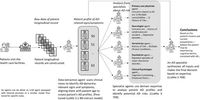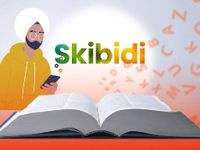In a world where words like "delulu" and "skibidi"—once the stuff of fleeting internet memes—now sit alongside "tradwife" in the Cambridge Dictionary, the English language is evolving at a dizzying pace. On August 24, 2025, the Cambridge Dictionary’s decision to officially add several Gen Z slang terms made headlines, sparking conversations about how digital culture, social media, and even emojis are reshaping what it means to speak and write in English today. But as language morphs, so too does the debate about its role in diverse societies—nowhere more so than in India, where the question of English’s place as a "link language" is again front and center.
“It’s not every day you get to see words like skibidi and delulu make their way into the Cambridge Dictionary. We only add words where we think they'll have staying power. Internet culture is changing the English language and the effect is fascinating to observe and capture in the Dictionary,” said Colin McIntosh, Lexical Programme Manager at Cambridge Dictionary, in a statement that seemed to capture the zeitgeist.
So what do these new entries actually mean? "Delulu," an adjective, is short for "delusional," used to describe unrealistic beliefs—think, "She’s so delulu thinking she can finish that project in one night." "Skibidi" refers to a viral dance or meme from the hit song "Skibidi," and can mean cool, bad, or just be used humorously with no specific meaning. "Tradwife," meanwhile, is shorthand for a "traditional wife," describing a woman who embraces conventional domestic roles.
But how do such words, born in the wilds of TikTok and Twitter, find their way into the hallowed pages of dictionaries? The answer lies with lexicographers—the unsung heroes who track language as it’s used in books, newspapers, websites, and, increasingly, on social media. Only words that demonstrate clarity, longevity, and usefulness pass their rigorous review, eventually earning a place in the official lexicon. It’s a process that ensures dictionaries reflect not just the language of Shakespeare and Austen, but also the living, breathing reality of how people communicate today.
This careful stewardship is evident in the work of major dictionaries. The Oxford English Dictionary (OED) is often hailed as the definitive record, tracing the evolution of words from their earliest uses to the present. In the United States, Merriam-Webster is a trusted source for clear definitions and timely updates. The Cambridge English Dictionary caters to learners worldwide, while the Collins English Dictionary is known for capturing modern slang and regional expressions. Australia’s Macquarie Dictionary documents the unique idioms of Australian English. Together, these institutions not only preserve the language’s rich history but also ensure it remains relevant in an ever-changing world.
Social media, in particular, has become a powerful engine for linguistic innovation. Take "rizz," a word meaning charisma, which went viral on TikTok before making its way into dictionaries. According to Our World in Data, the global rise of social media has accelerated the spread of such trends, while researchers have noted that major world events—like the COVID-19 pandemic—can rapidly expand the collective vocabulary. It’s no exaggeration to say that social platforms are now the world’s most prolific language factories.
But it’s not just new words that are changing the way we communicate. Visual elements, especially emojis, are increasingly integrated into everyday language. A 2023 study published on ResearchGate found that over 80% of social media users employ emojis daily, cutting across languages and cultures. By 2024, Baylor University researchers reported that emojis could reduce misunderstandings in digital communication, adding tone and warmth where plain text might fall flat. The U.S. Library of Congress, back in 2017, observed that these visual symbols subtly influence grammar, syntax, and communication patterns, especially among younger generations.
The process of standardizing emojis is no less rigorous than that of adding words to dictionaries. The Unicode Consortium, an international body, reviews proposals, tests relevance, and ensures every emoji—from samosas to sloths—has universal clarity before it’s added to the Unicode Standard. This ensures that emojis appear consistently across devices and platforms, mirroring the way dictionaries maintain the integrity of language.
Yet as English absorbs new slang, symbols, and even words from other languages, its role as a "link language" in multilingual societies is being hotly debated. In India, retired IAS officer and former Vice-Chancellor of the Indian Maritime University, K Ashok Vardhan Shetty, recently made waves by calling for English to be recognized as the permanent link language of the country. “None of the essentials of Indian cuisine, from potatoes and tomatoes to coffee and tea, are native to India. They were introduced just a few centuries ago, yet today they are integral to our culture. Similarly, English is no longer a foreign tongue. After 250 years, it is very much an Indian language,” Shetty said, as reported by DT Next.
Shetty’s argument hinges on the idea that India’s unity lies not in linguistic uniformity, but in embracing diversity. He pointed out that both Hindi and English are technically foreign in origin—Hindi from the Indo-Aryan family, Tamil from the Dravidian—but that the real issue is not where a language comes from, but how useful it is. English, he noted, has proved indispensable as a global lingua franca, a medium for higher education, diplomacy, and even India’s freedom struggle. He criticized the National Education Policy 2020’s three-language formula as "unrealistic and unwise," urging schools to focus instead on strengthening literacy in the mother tongue and English. He also advocated for expanding the Eighth Schedule of the Indian Constitution to recognize more languages, reflecting the country’s true linguistic diversity.
Meanwhile, as English’s influence grows, it continues to borrow and lend words freely. Hindi, for example, has left its mark on English with terms like "bungalow," "shampoo," and "pyjamas"—a testament to the language’s adaptability and openness. At the same time, the disappearance of words, whether from English or any other language, is a reminder that language is always in flux, shaped by the forces of history, culture, and technology.
From the cave paintings of Bhimbetka to the latest viral meme, the human impulse to record, share, and preserve meaning remains unchanged. As Cambridge University Press noted in "Emoji and the History of Human Communication" (2022), what changes is the medium—rock walls have given way to smartphones, and hieroglyphs to hashtags. Today, English stands at the crossroads of tradition and innovation, a language both ancient and ever new, shaped as much by the lexicographer’s careful eye as by the collective creativity of its speakers.
In a digital age where "delulu" can be both a joke and a dictionary entry, and where English bridges continents and cultures, the story of language is, more than ever, a story about us all—our history, our technology, and our endless capacity for reinvention.

